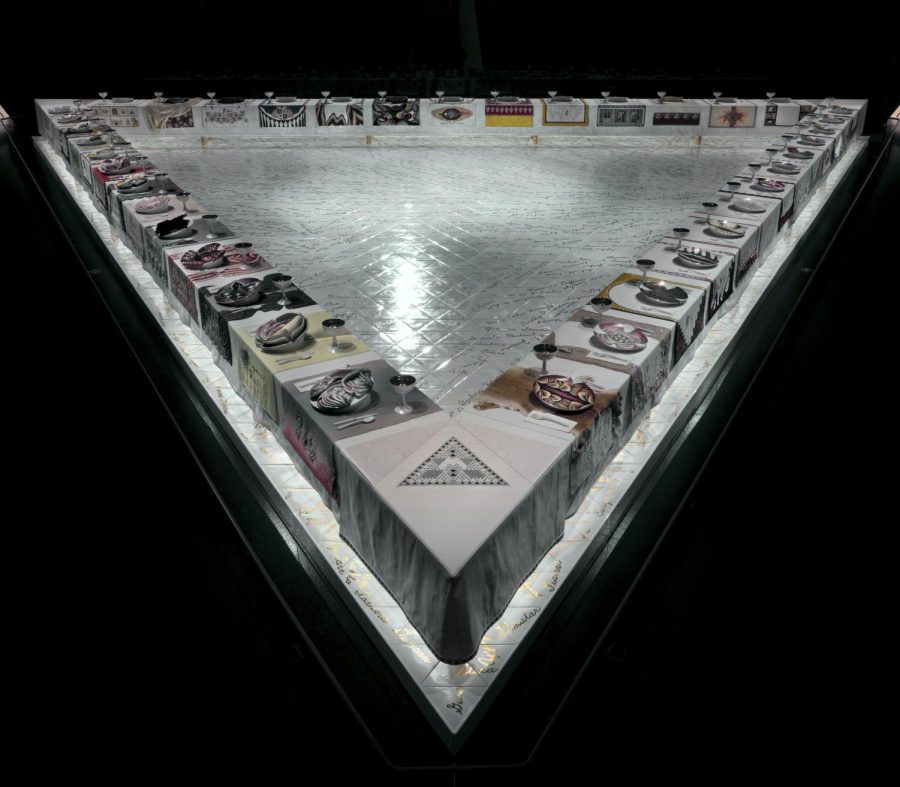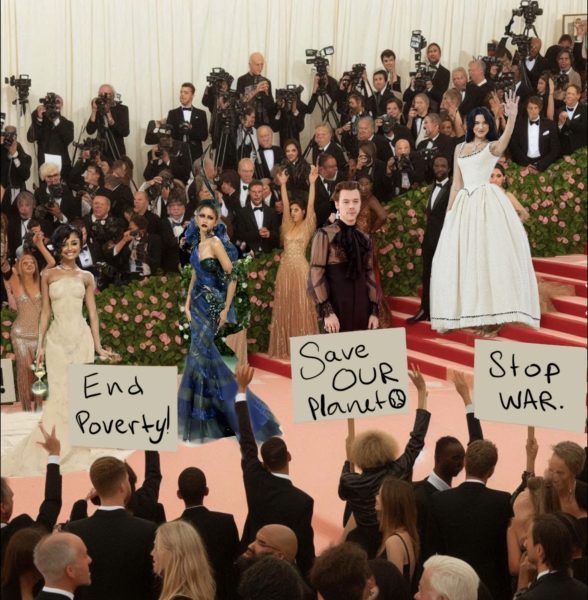The Dinner Party, Judy Chicago, and many others
What do you normally see at a dinner party? Family, Friends, loved oneswho have gathered to discuss their lives, to discus the world. This is no different, this work brings women from many different times and experiences to direct modern people to look back and see women who came before. Judy Chicago was born on July 19, 1939. She attended the Art Institute of Chicago and the University of California, Los Angeles. Her early work was minimalist, with her later works having solid links to feminist and contemporary art. For her extensive body of work, she used a variety of mediums such as painting, sculpture, and installation art.
Chicago created ‘The Dinner Party ’ in 1979, a unique and powerful work of art. The artwork illustrates and celebrates 1,038 women in history, with 39 women being represented by place settings on a large table. Another 999 names are inscribed on the Heritage Floor on which the table rests. As they approached the present day, the plates became increasingly three-dimensional, symbolising that women were rising. The plates look like a mixture of flowers and butterflies to resemble female genitalia.
When we look at the plates closer we see a clear, explicit representation of women through their genitalia which was quite extreme for it’s time. This extreme representation forced the viewer to engage with how direct the plates are. To further look at the plates, you can view them at this site: https://www.brooklynmuseum.org/eascfa/dinner_party/place_settings. Clicking on each plate will lead you to a short exploration of the rationale behind making each plate for these disregarded women.
Within The Dinner Party, there are three main parts: Wing One – Prehistory to Classical Rome, Wing Two – Christianity to the Reformation, Wing Three – American Revolution to the Women’s Revolution. As time progressed from wing one to three, the plates began to grow in three-dimensionality, suggesting the growth of women’s desire for change and power in society. The plates themselves are not used to sexualize and/or reduce women; they are used as a tool to explore women, to explore the different facets that they have through their characteristics, actions, and person. Thus allowing much more human interaction with these 39 historical women and their achievements, enabling them to be recognized and remembered on a larger scale.
The historical remembrance and homage of women have become increasingly common in modern times. Yet, women have been and still are being pushed and forced out of their stories, forced to be forgotten, no, ignored by the men, who are scared to see them as equals and recognize their ability to grow and lead.
This artwork was accepted because of the changing times, and the drastic evolution in the public’s desire for change. The 1970s were a critical time for social and cultural shifts as people began to stand up for themselves and others to face a world that kept them in the dark for so long. Examples of these include the Civil Rights Movement, the Black Lives Matter movement, and the feminist movement, all of which Chicago was very key on pushing to create thethe world we are in today.
Such works from Judy Chicago began to change what society believed to be proper or the standard. Thus allowing both men and women to understand better their history and how people other than white men can create a change or provide a system that we must live by.







